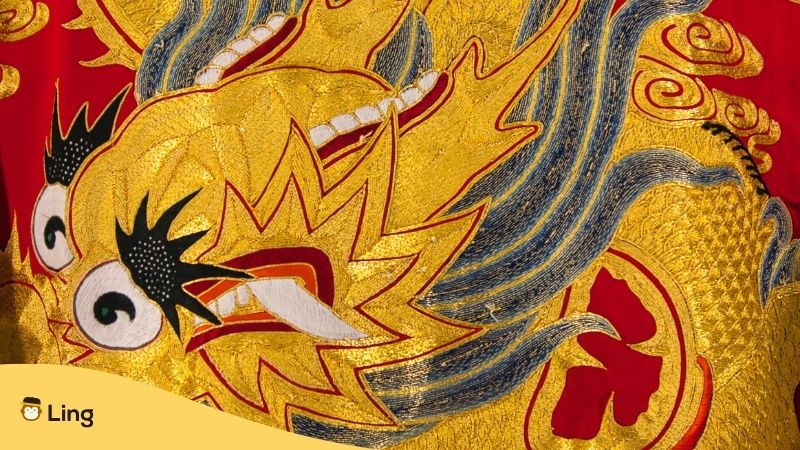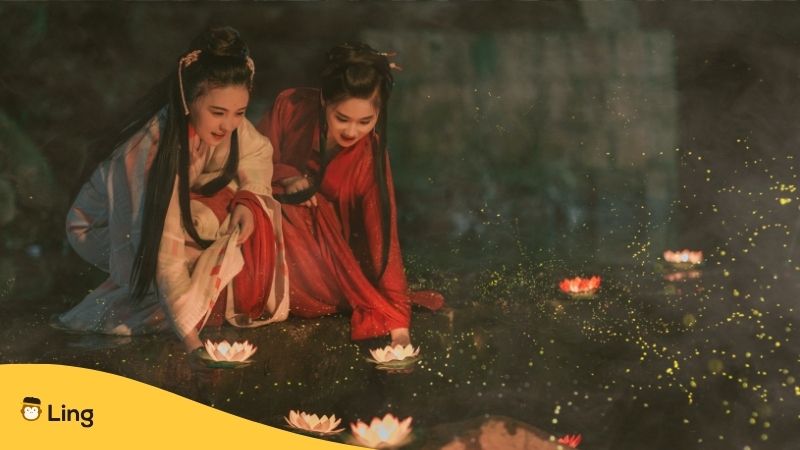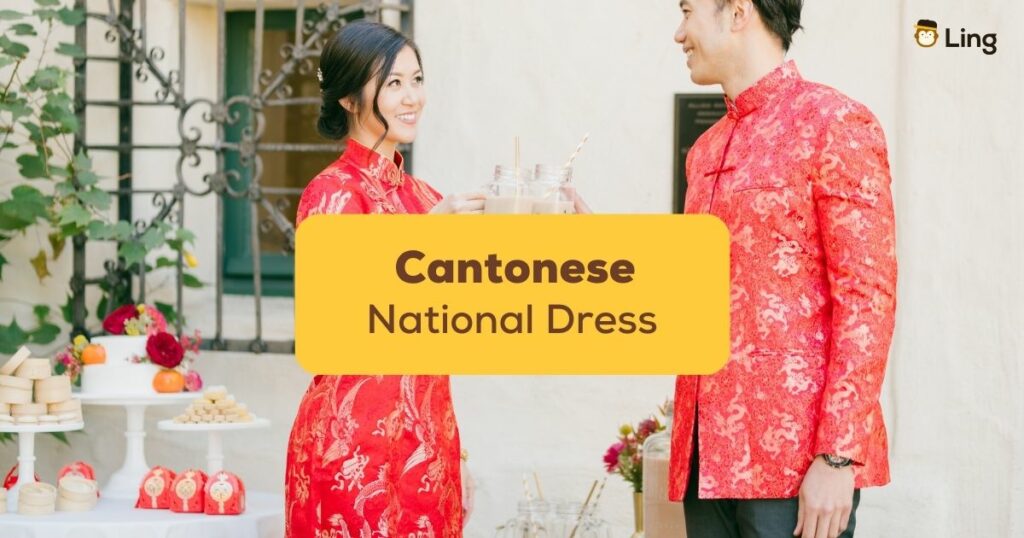Modern Cantonese national dress is an instantly recognizable style of clothing. You will have seen it worn in countless Chinese movies from Kung Fu action flicks to historical dramas and romances. Usually vibrantly colorful, figure-hugging, and with highly detailed embroidery, Chinese traditional clothing dates back to the 1920s when it was adopted by socialites and members of the elite society in Shanghai. Since then it has evolved and became associated with Hong Kong following the 1949 communist revolution when many tailors relocated to the province.
So let’s take a closer look at the history, components, symbolism, and contemporary relevance of Cantonese National dress.
Historical Roots Of Cantonese National Dress
The Cantonese people, primarily residing in the Guangdong province of southern China, wore traditional Chinese clothing as part of the Eight Banner system which included dress regulations as a way of identifying different peoples and their position in Chinese society.
Tang Dynasty Influences
Cantonese National dress can trace its roots to the Tang Dynasty (618-907 AD). During this period, the Guangdong region became an important trading hub due to its proximity to the South China Sea. As a result, the Cantonese people interacted with various cultures, including those from India and Southeast Asia, influencing their clothing styles and updating their ancient Chinese clothing designs.
Development Of Key Components
The distinctive elements of Cantonese National dress began to take shape during the Ming Dynasty (1368-1644) and the Qing Dynasty (1644-1912). These components include the “changshan” 長衫 (long shirt) for men and the “qipao” 旗袍 (banner gown) for women, each characterized by its own particular features and design.

Cantonese National Dress
Let us take a look at some of the dresses worn by the Chinese people.
Long Shirt – Changshan (長衫)
The Changshan, often considered the male counterpart to the Qipao, is a traditional Chinese garment for men. It consists of a long gown with a straight cut and a high mandarin collar. Some key features of the Changshan include the following.
Frog Closures: The gown typically fastens with frog closures, a type of buttoning system, which adds a touch of elegance to the attire.
Slits: The Changshan usually has slits on both sides, making it comfortable for movement while maintaining its formal appearance.
Embroidery and Patterns: Depending on the occasion, Changshans may be adorned with intricate embroidery, patterns, and Chinese characters symbolizing prosperity, happiness, or cultural motifs.
Banner Gown – Qipao (旗袍)/ Long Garment – Cheongsam (長衫)
The Qipao, often associated with Cantonese women who like to wear silk clothing, is an iconic and elegant traditional Chinese dress with a form-fitting silhouette sometimes referred to as the Mandarin Gown. This stunning women’s clothing features the following elements:
High Collar: The Qipao has a high, mandarin-style collar, which exudes grace and sophistication.
Slit: Similar to the Changshan, the Qipao typically has a side slit, allowing for ease of movement and showcasing the wearer’s legs.
Fabric and Patterns: Qipaos are made from various fabrics, including silk and satin, and are often adorned with beautiful patterns, such as floral designs or intricate motifs.
Symbolism In Cantonese National Dress
Cantonese traditional Chinese clothes is not just about fashion; it carries deep cultural and symbolic significance. Each component and element of the attire conveys a unique message in Chinese culture.
Colors
The choice of colors in Cantonese National dress holds symbolic meaning:
Red: Symbolizes joy, happiness, and good fortune.
Gold: Represents wealth, prosperity, and success.
Blue: Conveys tranquility, calmness, and stability.
Green: Symbolizes health, growth, and harmony.
Embroidery And Patterns
The intricate embroidery and patterns on Cantonese National dress often carry cultural and personal significance:
Dragons and Phoenixes: These mythical creatures are commonly embroidered on Changshans and Qipaos, representing power and elegance.
Floral Motifs: Flowers like peonies and plum blossoms symbolize beauty, wealth, and resilience.
Birds: Swallows and cranes are often featured, symbolizing love, fidelity, and longevity.
Accessories
Traditional accessories such as jade jewelry, hairpins, and fans are often paired with the Qipao on formal and casual occasions to enhance its beauty and cultural meaning.

Contemporary Relevance
While Chinese clothing culture has deep historical roots, it remains relevant in contemporary society. Its enduring appeal can be attributed to several factors:
Cultural Pride
Cantonese people take great pride in their traditional Chinese culture, and wearing traditional attire is a way to celebrate and preserve their identity.
Festivals And Celebrations
Hong Kong-style cheongsams are commonly worn during festive occasions, such as weddings, Lunar New Year celebrations, and cultural festivals, keeping the tradition and Chinese history alive.
Modern Interpretations
Designers and fashion enthusiasts have reimagined traditional dress, creating modern and fusion styles that appeal to a wider audience including overseas Chinese as well as Western fashion aficionados.
The Future Of Cantonese National Dress
As we look ahead, it’s clear that Cantonese National dress will continue to evolve while preserving its cultural essence. The younger generation is showing interest in reviving and reinventing this attire, ensuring its relevance in a rapidly changing world.
Learn More Cantonese Culture With Ling
Choosing to take on a new language like Cantonese can be a daunting task if you are not sure you have the right tutor. With Ling, you will be given all the tools you need not only to start learning Cantonese immediately but also to read and write this incredible language. Practicing conversation is made easy with Ling’s AI chatbot and lessons are kept relevant and entertaining with fun games and quizzes to help you recap what you have learned and assess your progress. Why not try the Ling app today by clicking on the App Store or Google Play?



































































